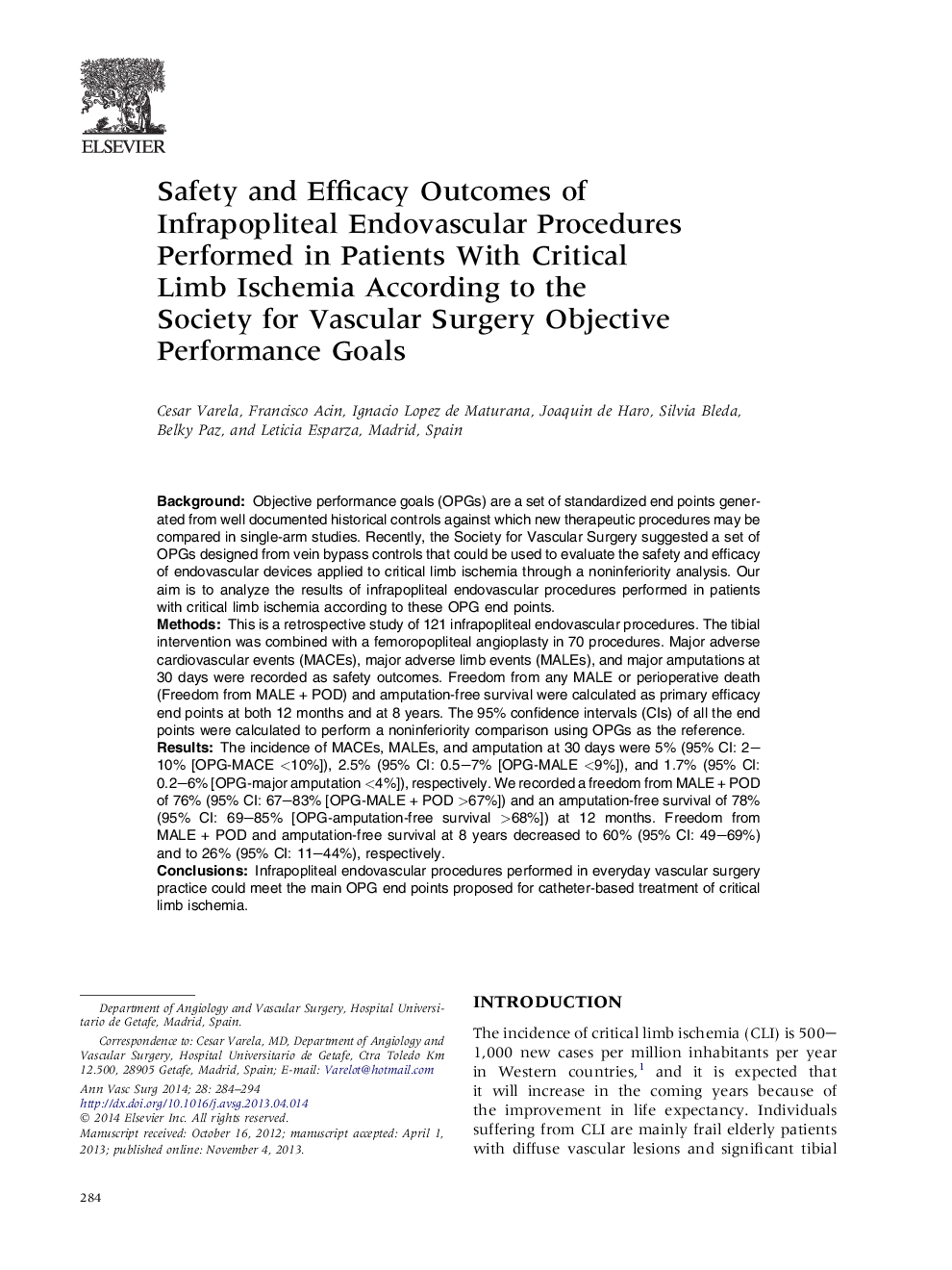| کد مقاله | کد نشریه | سال انتشار | مقاله انگلیسی | نسخه تمام متن |
|---|---|---|---|---|
| 2886316 | 1574213 | 2014 | 11 صفحه PDF | دانلود رایگان |

BackgroundObjective performance goals (OPGs) are a set of standardized end points generated from well documented historical controls against which new therapeutic procedures may be compared in single-arm studies. Recently, the Society for Vascular Surgery suggested a set of OPGs designed from vein bypass controls that could be used to evaluate the safety and efficacy of endovascular devices applied to critical limb ischemia through a noninferiority analysis. Our aim is to analyze the results of infrapopliteal endovascular procedures performed in patients with critical limb ischemia according to these OPG end points.MethodsThis is a retrospective study of 121 infrapopliteal endovascular procedures. The tibial intervention was combined with a femoropopliteal angioplasty in 70 procedures. Major adverse cardiovascular events (MACEs), major adverse limb events (MALEs), and major amputations at 30 days were recorded as safety outcomes. Freedom from any MALE or perioperative death (Freedom from MALE + POD) and amputation-free survival were calculated as primary efficacy end points at both 12 months and at 8 years. The 95% confidence intervals (CIs) of all the end points were calculated to perform a noninferiority comparison using OPGs as the reference.ResultsThe incidence of MACEs, MALEs, and amputation at 30 days were 5% (95% CI: 2–10% [OPG-MACE <10%]), 2.5% (95% CI: 0.5–7% [OPG-MALE <9%]), and 1.7% (95% CI: 0.2–6% [OPG-major amputation <4%]), respectively. We recorded a freedom from MALE + POD of 76% (95% CI: 67–83% [OPG-MALE + POD >67%]) and an amputation-free survival of 78% (95% CI: 69–85% [OPG-amputation-free survival >68%]) at 12 months. Freedom from MALE + POD and amputation-free survival at 8 years decreased to 60% (95% CI: 49–69%) and to 26% (95% CI: 11–44%), respectively.ConclusionsInfrapopliteal endovascular procedures performed in everyday vascular surgery practice could meet the main OPG end points proposed for catheter-based treatment of critical limb ischemia.
Journal: Annals of Vascular Surgery - Volume 28, Issue 2, February 2014, Pages 284–294